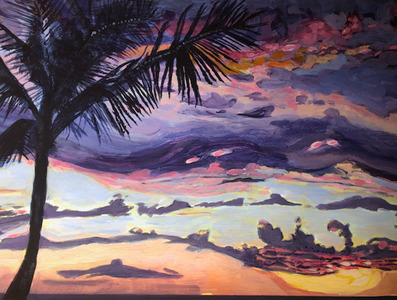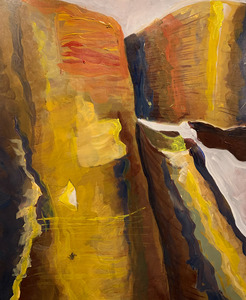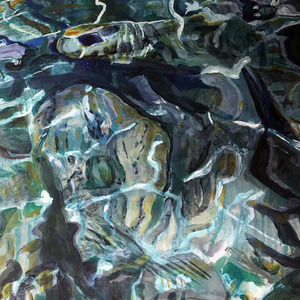Acrylic Painting II: Developing Techniques and Styles
Instructor: Robin Adair
Wednesdays 1-4pm
10 weeks: January 22 to March 26
Location: In-person Williams Building room 306
$387.50 (supplies not included)
Prerequisite: Acrylic Painting I or equivalent experience
In this course, students will explore a range of principles in painting through technique-based as well as exploratory approaches to the acrylic medium. Students will work both from observation and imagination, and will draw inspiration from a variety of styles and artists. This class is for intermediate level painters who want to develop and hone their craft in a supportive environment where individual expression and critical thinking is highly encouraged.
Syllabus
- Introduction to course; gestural paintings and tonal exercises
- Painting clouds: layering opaque and transparent colours
- Saskatchewan artist study: Dorothy Knowles
- Still-life study: depicting glass and reflected surfaces
- Animal portrait study: analyzing proportions and rendering textures and surfaces
- Master study: Rembrandt’s self-portrait
- Palette knife and alla prima techniques
- Master study: Tom Thomson
- Cubist abstraction
- Self-directed work
Please note this outline is subject to change depending on student interest.
Supplies
- Brushes: a variety of acrylic brushes, either synthetic or hog hair bristles ranging in size from 6-12, I recommend filberts, flats, and rounds
- Palette knives: 3 palette knives, either plastic or metal, I recommend finding different sizes of the trowel (diamond shaped) blade
- Paint: whatever colours you already own, I recommend the following pigments and please note: the names given in this list are based on the ones used by Golden brand paints, if you buy other brands, you will find some variance in the way the names match the pigments
- Titanium White
- Cadmium Yellow Medium
- Primary Yellow (or Hansa Yellow Light)
- Cadmium Red Medium
- Alizarin Crimson
- Ultramarine Blue
- Cobalt Blue
- Paint palette: a large palette, around 12" x 16", you can purchase plastic, metal, or ceramic palettes at any local art store or you may use your resourcefulness, i.e. an old plastic Tupperware tray will work just fine. I will also teach you how to make your own wet palette. For this you will need paper towel, parchment paper, and bulldog clips
- White gesso: 33 oz container
- Acrylic gel medium: as you will see, there is a wide range of gel mediums on the art store shelves. Most of the brands and types are suitable for this course. I recommend a regular soft gel, either matte or gloss, or the Golden GAC (100 series). Either of these are versatile acrylic gel products and are suitable for the projects we will be doing in this course
- Cotton rags
- Supports: for this course, we will be using paper supports. You may choose any of the cotton rag or cover stock brands of paper. I recommend white Stonehenge because it is a good quality paper that will serve as a sturdy support once it is gessoed. Four full sheets of Stonehenge (22” x 30”) should be sufficient for our projects in this course. We will be dividing the full sheets into halves and quarters as we progress through the class. Note: If you already had experience with other kinds of supports (canvas, board, etc.) please feel free to use them in this course.
For a brief list of frequently used suppliers, please see Where can I purchase supplies? on our FAQ page.












